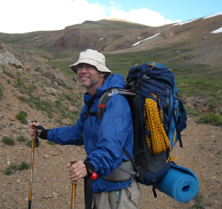Andrew Thomas
Address: 454 Aubert Hall, University of Maine, Orono, ME 04469-5741
Research Area:
My research interests are broadly focused on the spatial and temporal patterns of plankton in the oceans. The oceans are NOT a homogenous soup, but are extremely patchy in both space and time, and in terms of both biomass and community structure. I have a special interest in plankton interactions with the physical environment; looking for quantitative and mechanistic links to current structure, water mass shifts, seasonal cycles, interannual variability, climate-related signals, wind forcing, etc. Geographically, my research is usually divided between two regions 1) the Gulf of Maine, a small but fascinating chunk of ocean with strong tidal forcing, a huge seasonal signal, surprising spatial heterogeneity and still poorly understood interannual variability, and 2) global Eastern Boundary Currents, some of the most biologically productive regions on the planet with strong wind forcing, upwelling and large interannual variability (ENSO, PDO etc). I make extensive use of satellite data to try to quantify the patterns I’m interested in. The tools of my trade are many fast computers, big monitors, huge on-line disk storage space, computer graphics, data bases, GIS and remote sensing software. In my lab we primarily use satellite sea surface temperature (NOAA and MODIS) and ocean color imagery (SeaWIFS and MODIS data), but also scatterometer data, synthetic aperture radar imagery, and dabble in altimeter, LANDSAT data and airborne multispectral imagery. My research is inherently multidisciplinary. I often work in large teams of scientists, including biological and physical oceanographers, fisheries oceanographers, statistitians, numerical modelers, digital image specialists and marine resource managers. My colleagues are spead over a wide geography: e.g. Oregon, Washington, British Columbia, California, Georgia, Chile, Spain.


